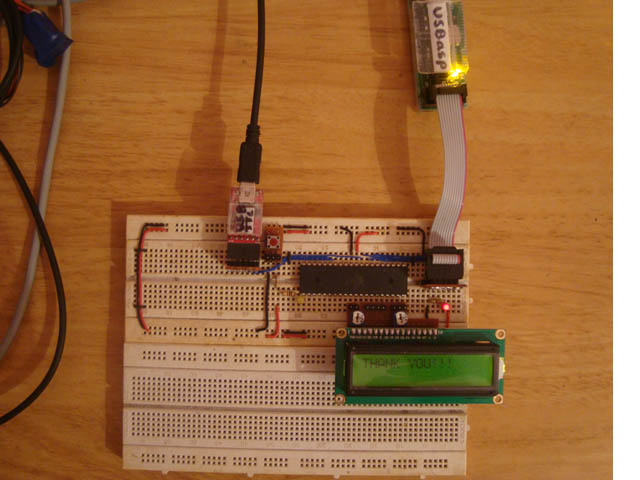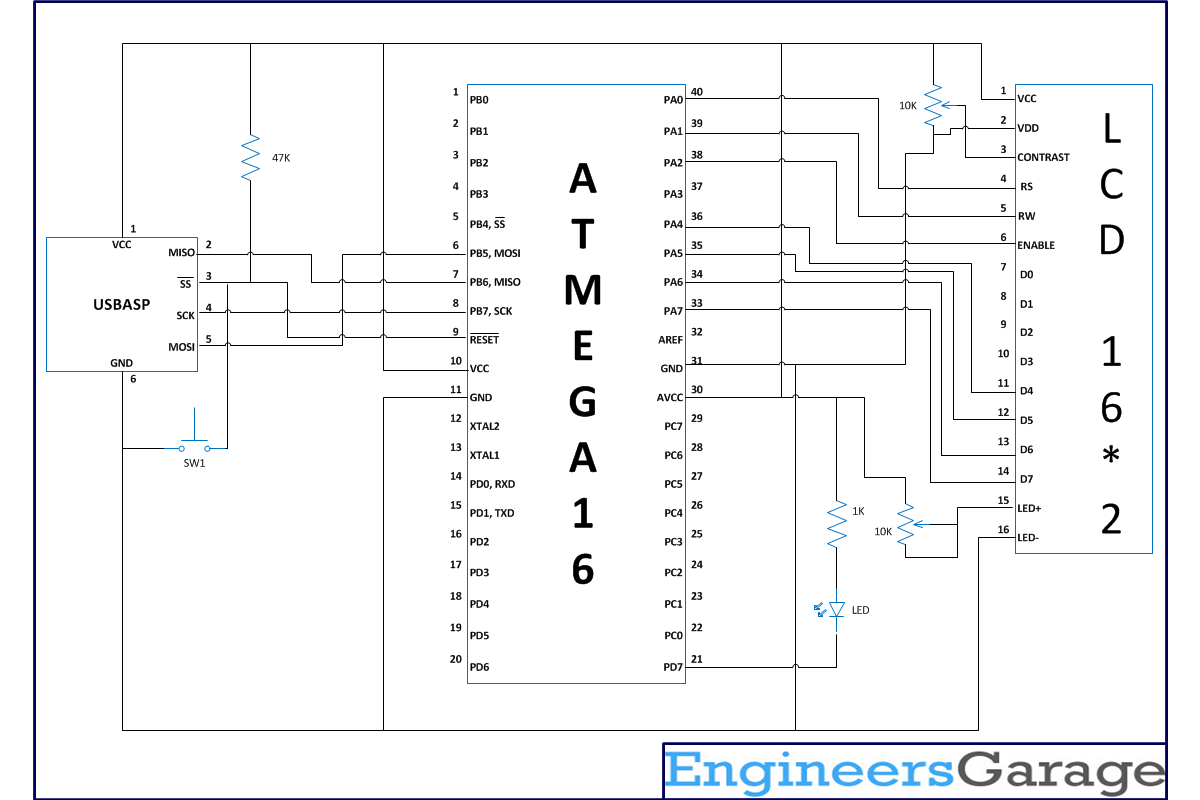Summary of How to Program in Boot Loader Section
This project demonstrates programming the ATMEGA16 microcontroller's flash memory divided into Application and Boot Loader Sections (BLS). A simple LED blinking code is programmed separately into the BLS and Application sections. The BLS code runs first after reset, then jumps to the application code, illustrating the foundation for bootloader design. The project uses AVR Studio IDE, USBasp programmer, and AVR-Burnomat software. Key steps include setting memory address to 0x1C00 for BLS programming and configuring fuse bits to enable internal oscillator and correct reset vector.
Parts used in the ATMEGA16 Boot Loader Programming Project:
- ATMEGA16 microcontroller
- LED for blinking indication
- AVR Studio (IDE)
- USBasp programmer
- AVR-Burnomat burner software
- Power supply (for microcontroller operation)
- Connecting wires and breadboard (optional, for hardware setup)
In the AVR microcontroller the flash memory is divided into two parts, namely Application Section and Boot Loader Section. A code can be programmed into either the Application Section or the Boot loader Section (BLS). The code programmed into the Application section runs normally and is used for common applications, whereas the code running in the BLS is provided with some special features. The code running in the BLS section can execute Self Programing Mode (SPM) instructions which are blocked for the code running in the Application section. Using SPM instructions the code from the BLS can rewrite the code in the application section or the code in the BLS itself. The BLS section is normally used for storing the Boot-loader code for the microcontroller. The Boot-Loader code can be used for initializing the peripherals in the microcontroller, initialize the devices connected to the microcontroller, select the application to load and execute from a storage medium, load the selected application to the application section, jump to the application section and execute the application.


This project tries to program a simple LED blinking code into the BLS and another similar kind of simple code in the Application section and observes the code executing in the BLS and then makes a jump to the Application section code. Programing a simple code into the BLS, make the microcontroller to execute the program in the BLS after a reset and jumping from the BLS to the application code are the initial steps to create a Boot-Loader code for the microcontroller. In this project ATMEGA16 microcontroller is used and AVR studio is used as the IDE. The programmer used in this project is Usbasp and the burner software used is AVR-Burnomat.
The AVR flash memory is divided into two sections namely the application section and the Boot-Loader section (BLS). In case of the ATMEGA16 it has 16 KB of flash memory of which the 15KB is application section and the rest 1KB is BLS. The memory architecture of the ATMEGA16 is shown in the following figure;
The code for the BLS or application section is written as normally does and there is no much difference. The only thing to be careful about is the size of the code binary. It should not be more than 1KB, otherwise it won’t be able to code programmed into the BLS. The following section discusses how to program a code into the BLS of ATMEGA16 microcontroller with the help of AVR studio as IDE, USBasp as the programmer and AVR-Burnomat as the burner software.
Open the AVR studio, copy and paste a simple led blinking code which is given below;
//#######################################################################//
#define F_CPU 8000000
#include <avr/io.h>
#include <util/delay.h>
int main ( void )
{
DDRD |= 0x80;
while(1)
{
PORTD &= 0x7F; //led on
_delay_ms ( 500 );
PORTD |= 0x80; //led off
_delay_ms ( 500 );
}
}
//#######################################################################//
Before compiling the few settings need to be done. Select the target as ATMEGA 16 as shown in the figure.
The code should be compiled in such a way that it will get flashed at the BLS only. For that one need to do the memory settings as shown below. Select the memory as “flash” name the memory as “.text “give the memory address as “0x1C00”.
Now build the code. Once the compilation has been completed a hex file will be generated. The USBASP programmer is currently not supported by the AVR studio 4. Hence software called AVR-BURNO-MAT can be used for flashing the hex file.
One must write the fuse bits before flashing the code so as to enable the features such as to enable the internal oscillator and to select the reset vector as 0x1C00
For more detail: How to Program in Boot Loader Section

